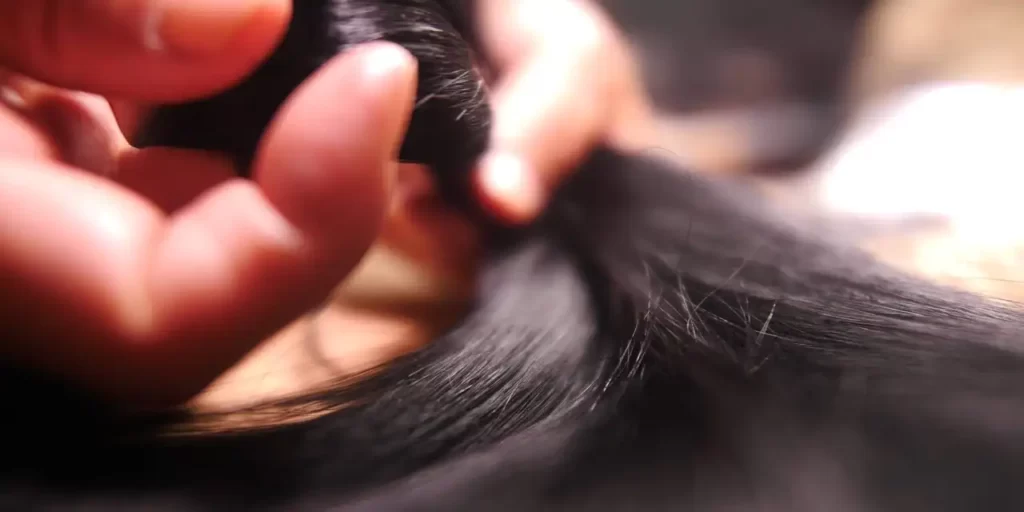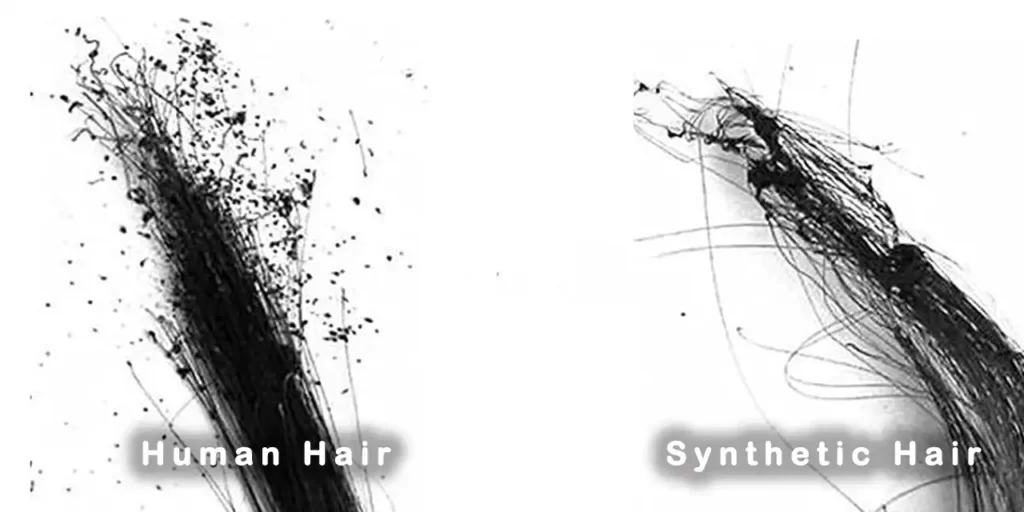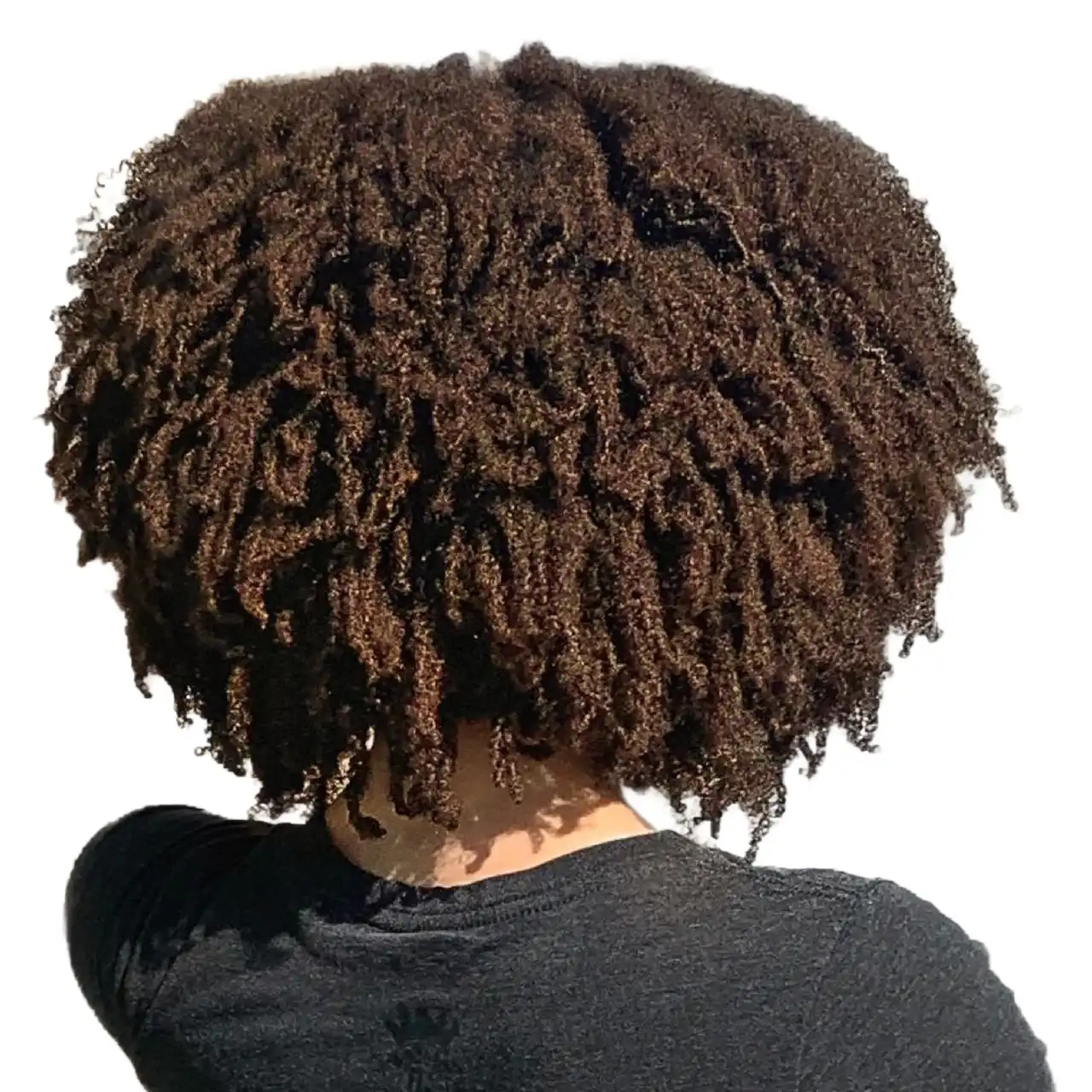Table of Contents
If you’re a beginner to wigs, this area might be confusing, considering the considerable price difference between artificial and real hair. You could incur unnecessary losses if you can’t accurately identify whether your hair is artificial or real. So let’s dive into what differentiates artificial hair from real hair.

What is human hair – advantages and disadvantages
In wig terminology, human hair refers to hair harvested from human donors. Compared to synthetic hair, human hair is prized for its natural look, feel, and versatility, but it is more expensive.

Advantages:
- Natural Look and Feel: Human hair wigs offer the most natural look and feel. They have natural texture and shine, and they move like your own hair would.
- Versatility: They can be cut, styled, dyed, or permed to suit your personal tastes. You can use heat styling tools just as you would with your own hair.
- Durability: With proper care, human hair wigs can last for a year or more, even with daily wear.
Disadvantages:
- High Maintenance: Just like real hair, they need to be washed, dried, and styled. They also tend to frizz or lose style in humid conditions.
- Cost: Human hair wigs are typically more expensive than synthetic wigs due to the process of collecting and treating the hair.
- Color Variance: Human hair wigs may not always come in the exact color as shown in the wig sample or color chart since they are made from natural hair.
What is synthetic hair – advantages and disadvantages
Synthetic hair is made from man-made fibers and is a popular choice for its ease of use and affordability.

Advantages:
- Ease of Use: Synthetic wigs come pre-styled and retain their style even after being washed, making them easier to care for.
- Cost: They are generally less expensive than human hair wigs.
- Variety: Synthetic wigs come in a wide variety of styles and colors, and they’re more readily available than human hair wigs.
- Weather Resistance: They hold their style regardless of the weather, unlike human hair wigs.
Disadvantages:
- Unnatural Shine: Some synthetic wigs have an unnatural shine in bright lighting, but this can be lessened with products designed for synthetic hair.
- Less Versatility: Most synthetic wigs cannot be restyled and cannot be exposed to heat from styling tools, although heat-friendly synthetic wigs are an exception.
- Shorter Lifespan: Even with proper care, synthetic wigs typically last between 3 to 6 months with regular use, considerably less than high-quality human hair wigs.
How to distinguish between real hair and synthetic hair?
I have summarized four, and the main points to help you quickly distinguish them
1 Look: When we talk about looks, synthetic hair, and real hair reflect light differently, resulting in unique colors under light. Synthetic hair has certain plastic properties and is shinier than real hair when exposed to light.

2 Touch: In terms of material, artificial hair is similar to plastic, while human hair belongs to the protein category. As a result, synthetic hair tends to feel stiffer than real hair. However, good wig makers can process synthetic hair so well that it feels almost like real human hair, which can challenge beginners to distinguish the two.

3 Dyeing: This does not refer to the factory dyeing method but to the regular hair salon dyeing process. Real human hair absorbs the color of the dye easily, while synthetic hair does not.

4 Burning: For starters, the easiest way to test your hair type is to burn a small strand of hair. Since real human hair is mostly composed of protein, it emits a smell similar to burnt feathers, similar to sulfur or “bad eggs.” Synthetic hair, on the other hand, produces a different smell when burned.

By considering these four points – look, touch, dye, and burn- you should be able to tell if your wig or extension is made of real or synthetic hair.
I hope today’s information was helpful and easy to remember. That’s all for today’s discussion. If you have any questions or need further advice, please do not hesitate to contact us.




